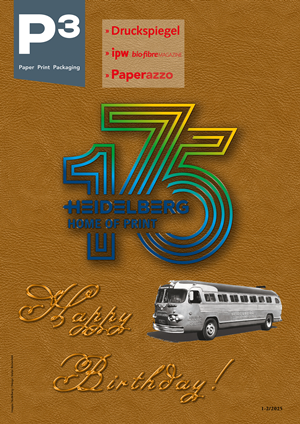P3 7-8/2022 en
Confectionery Market
High Turnovers and Highly Competitive
Special: Interpack
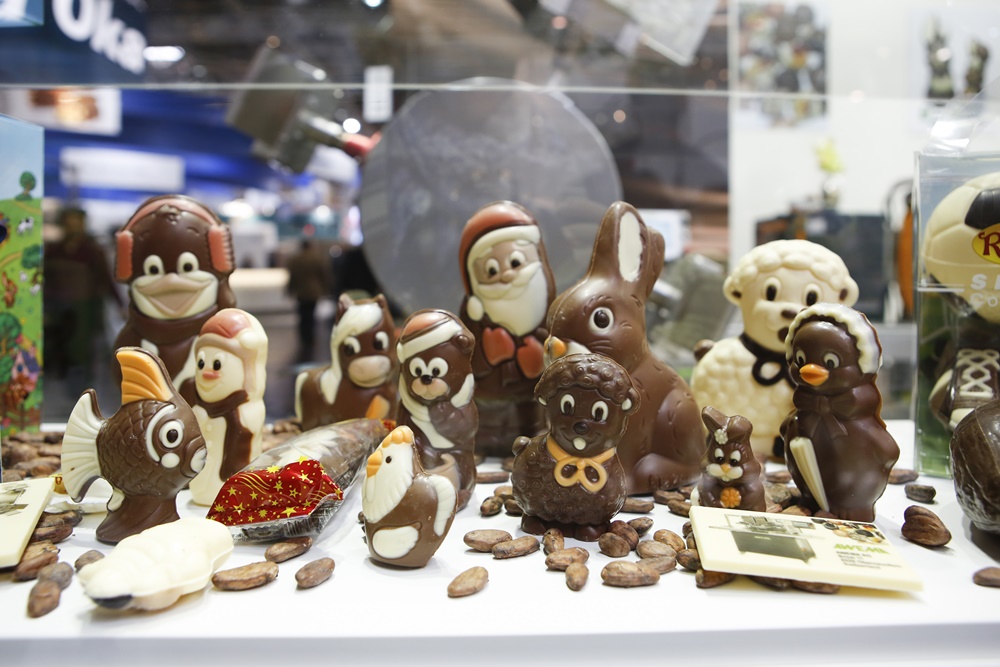
The pressure on the confectionery industry to switch to resource-saving packaging processes and materials is high.
Most people enjoy a sweet tooth, but with the trend towards more sustainability, there is also an increase in demand for sweets with more eco-friendly packaging. This puts severe pressure on the confectionery industry to adopt packaging processes and materials which are gentle to natural resources. Many producers of packaging already are able to offer sustainable solutions for chocolate, biscuits, etc.
The pressure on the confectionery industry to switch to resource-saving packaging processes and materials is high.
The European confectionery industry is one of the most dynamic and largest sectors in terms of production and export. More than 12,000 companies produce 14.7 million tons of confectioneries each year, says the European association Caobisco. Worldwide, however, the USA are the biggest producers of confectionery with a predicted turnover of 264 billion Euro in 2023 and the largest absolute growth, according to Euromonitor International, over the next five years.
Chocolate especially is what consumers prefer above all. In the European ranking by Chocosuisse in 2020, Switzerland led the per-capita consumption of chocolate with more than eleven kilograms per year, followed by Germany (9.2 kg), Estonia (8.3 kg) and Denmark (8.2 kg). Estonia even had the highest per-capita consumption of confectionery in 2022, according to Euromonitor – every inhabitant statistically ate a total of 13.6 kg. Prognostics say that this trend in the Baltic country will experience a large growth over the next five years.
A current survey by the German online platform Statista shows: Women eat more sweets. In the year 2022, about 34 percent of women said they consume sweets or savoury snacks every day. The number for men was 23 percent. In a different study, one quarter of the participants told the market investigators of POSpulse, that since the pandemic they have been consuming more sweets and snacks.
Manufacturers source the main raw ingredients for confectionery and snack foods mostly from Germany or the EU, according to the German Federal association BDSI. This makes the confectionery industry not only an important partner for the German and European agriculture, short transport distances also mean that it contributes to saving resources. International trade is of course important for the confectionery industry, too. Using roughly 400,000 tons of cocoa, the most important raw ingredient for chocolate, German manufacturers of confectionery process 10 percent of the global annual crop. All in all, European manufacturers use about half of the world’s available cocoa, according to Caobisco.
Currently, the industry like many others faces an existential crisis: Exploding costs for energy and raw materials, but also disruptions to delivery chains and the availability of raw materials disproportionately affect small and mid-size family businesses. For example, in autumn 2022, the cost increase for sugar was 100 percent, butter was 57 percent more expensive, and wheat 60 percent. “For our companies, the enormous pressure from rising costs leads to them questioning production sites or even their very existence. This is not only caused by the soaring cost of energy and raw materials in 2022, but also by negative pressure dependent on location, which in Germany has been higher than average for a long time. This includes expenditures on wages, taxes and the growing lack of qualified personnel,” says Dr. Carsten Bernoth, CEO of the German Federal association of German producers of confectionery (BDSI). ”For our producers, it is impossible to compensate for these considerably rising costs by saving or by proportionately raising sales prices.”
In spite of the crises, confectionery is one of the segments of the food industry with the highest turnover; this segment achieves the fourth highest. It is therefore no surprise that the confectionery market is one of the most competitive within the German retail market. And the industry is facing new requirements. Especially the growing awareness of consumers regarding health and the environment is creating a new demand for sugarfree varieties and packages that are more environmentally friendly. For manufacturers of confectionery this also means they have to create their packaging processes to be more flexible and more efficient. There is a growing trend towards automated production and packaging processes, and their sweet delicacies more often come in a sustainable wrap. For example, we have the first chocolate bars that are not wrapped in an inner aluminium foil and are just packaged in cardboard – however, as this is in direct contact with food, it needs a coating. Confectionery producer Fazer now uses a light, dispersion coated cardboard from Metsä Board for its advent calendars. Switching to the new material has reduced the use of plastics by 1,200 kg each year compared to the previous PE coated cardboard, says the company. The advent calendar is now also fully able to be recycled, the light weight and the new material’s efficient use of resources also cut its carbon footprint by one quarter. “Virgin fibre cardboard offers the necessary safety for advent calenders, especially where chocolate and cardboard come into direct contact. Our dispersion coated cardboard also has neutral sensory properties, which means the taste of the chocolate is preserved for a long time,” says Olli Haaranoja, Sales Director at Metsä Board.
Packaging chocolate at high speeds
An output of 250 bars of chocolate per minute is the rate of a new wrapping machine, marketed by Sacmi as part of the brand Carle & Montanari. It also processes new eco-friendly packaging materials. The machine is the result of a new approach to machine construction at Sacmi Packaging & Chocolate, which goes beyond traditional mechanical concepts and makes it possible to package sensitive products at high speeds and with constantly high quality. The wrapping machine produces chocolate bars with an inner and outer wrapping, where the inner wrapping is sealed on three sides while the outer wrapping is made of precut cardboard or paper. Sensors attached to the system monitor the consumption, work hours and efficiency indicators. In case of inconsistencies within the packaging process, the machine automatically issues an alert message and opens a remote connection to the service department.
A newly developed multi-style wrapping machine for chocolate truffles by Sacmi also processes eco-friendly foils. Using a top twist configuration, it wraps up to 500 chocolate truffles per minute, including sensitive products or those with irregular shapes. It is said to be the first wrapping machine with hybrid technology and not only uses mechanical, but also powerful, energy efficient servo drives. Other than that, the wrapping machine is equipped with real-time maintenance functions. As soon as the ideal settings for each motion have been defined, live diagnostics assure that deviations are immediately noticed and downtime can be avoided.
Confectionery packaging for the circular economy
Consumers increasingly expect sustainable packaging for confectionery. In a shared project, interpack exhibitors Sabic, confectionery manufacturer Mars and recycling service provider Landbell have recently developed flexible packaging for a snack bar. The monomaterial used is made up of certified, circular polypropylene from the Trucircle portfolio by Sabic. The circle starts with collecting mixed old plastics, coordinated by the Landbell Group. The mixed material is then changed by a thermal anaerobic process into pyrolysis oil, which serves as an alternative raw material for a novel PP polymer which is suitable for contact with food. From pellets made of this substance, manufacturer Taghleef then makes BOPP films.
Chocolate popular in Europe
According to Caobisco, the chocolate and confectionery association in the European Union, Finland is among the top five when it comes to chocolate consumption in Europe. Only Switzerland, Germany and Estonia consume more chocolate, the UK comes fifth.
The northern European confectionery manufacturer Orkla has recently invested in a new packaging machine especially for chocolate products with different folding varieties by Theegarten-Pactec, to increase packaging capacity at the Finnish production site Vaajakoski. The investment was preceded by a lengthy testing phase. “For us it was the perfect opportunity to test our packaging machine CHS first under real conditions in confectionery production. An endless stream of products, constant operation, different packaging materials and product qualities, cleaning and maintenance work during operation or even difficulties like a shutdown of processing systems – there is much that cannot be fully covered by a simulation. In the end, such tests are indispensable to give a new development the final touches and bring it to market readiness,” says Daniel Schibur, Head of Sales at Theegarten-Pactec. Alongside general function tests, special focus was placed on the two-track feed of the machine – a specialty of the CHS. The challenge: Divert a portion of the products from the endless product stream of the main belt into the two-track feed of the CHS while at the same time making sure that an even exchange happens between the two tracks. Each of the two feeding tracks must continually receive 900 products per minute, which are then combined in the packaging process into a one-track stream of 1,800 products per minute. An integrated camera system and effective placement of sensors now constantly check the product stream arriving at the main belt. This guarantees that the two product streams in front of the machine do not differ by more than five products. The machine can be flexibly switched to nine different folding varieties: Double twist, protected twist, top twist, side twist, tin foiling, bottom fold, side fold, Vienna fruit fold and – right now – envelope fold.
Theegarten-Pactec has also partly acquired the Turkish mechanical engineering company Makrev Packaging. The company based in Istanbul produces clocked wrapping machines for chocolates and jellies, as well as entire automated and feeding systems. Through the acquisition, Theegarten-Pactec wants to add to their portfolio and attract customers in the medium performance and price segment, below the high performance machines manufactured in Dresden.
Inspection system for snacks and sweets
As everywhere in the food industry, foreign bodies are absolutely not wanted in sweets or snacks. Modern inspection systems therefore guarantee safety at today’s packaging machines. A new X-ray inspection system by Mettler-Toledo, for example, was developed especially to detect foreign bodies in small, individually wrapped snacks and sweets at high production speeds. It makes a cost efficient inspection possible right after flow wrapping or sealing individual products. The compact inspection system is equipped with an integrated ejection mechanism and supports operation at belt speeds up to 120 meters per minute. This makes it possible for the first time to adjust X-ray inspection to the high speeds of many tubular bag or sealing machines, which are used in the confectionery industry for packaging individual products, says the manufacturer. Even very small foreign bodies are detected with a high degree of accuracy. And as individual bars rather than entire sales units are checked right after leaving the tubular bag machine, and are then if necessary ejected, there is also a saving of costs.
At interpack in Düsseldorf from 4 to 10 May, 2023, professional visitors will get to know the latest developments and trends in the sweets and snack industry. Especially in halls 1, 3 and 4 the focus is on innovative processing and packaging developments for the confectionery industry.
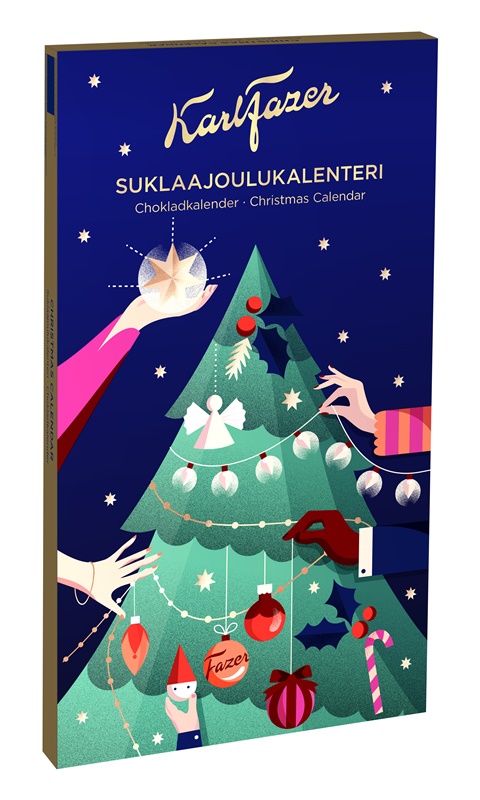
The advent calendar by Fazer does not need plastic, thanks to a dispersion coated cardboard box by Metsä Board.

Mars, Sabic and Landbell have together developed a circulatory alternative made of certified, circulated polypropylene.
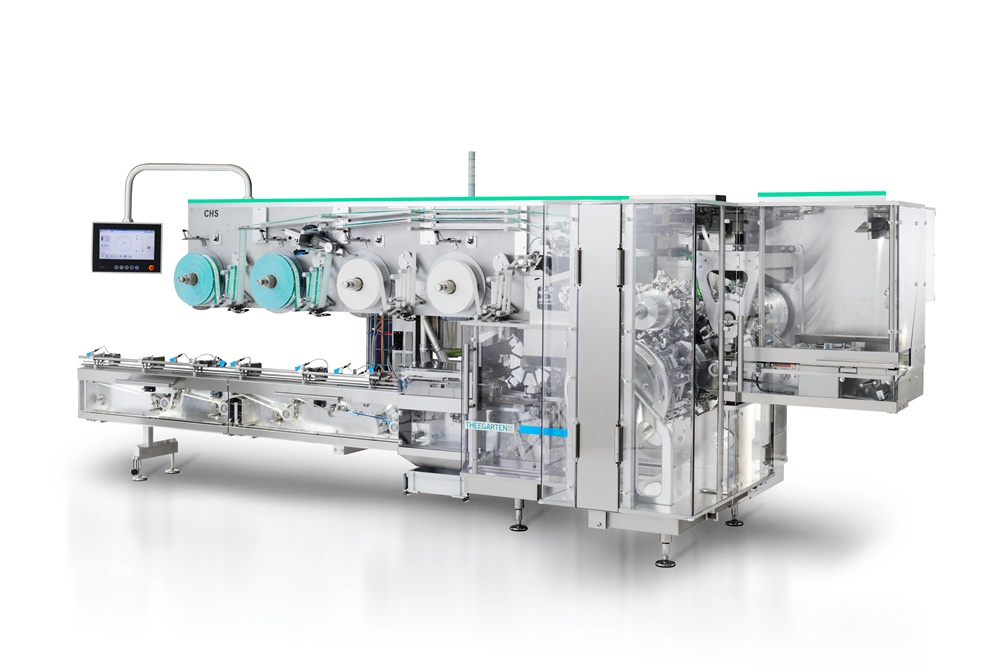
The modular high performance packaging machine CHS was specially designed for gentle wrapping of chocolate products.
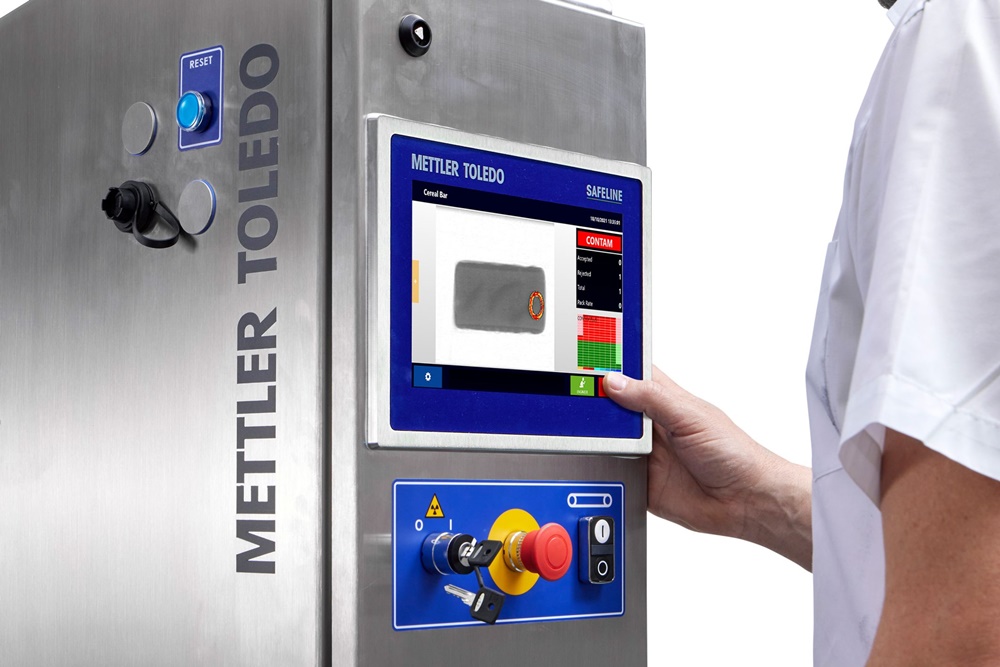
A new X-ray inspection system by Mettler-Toledo was developed especially to detect foreign bodies in small, individually wrapped snacks and sweets.
Editor: sbr
Images: Messe Düsseldorf/C.Tillmann; Fazer; Mars; Theegarten-Pactec; Mettler-Toledo

